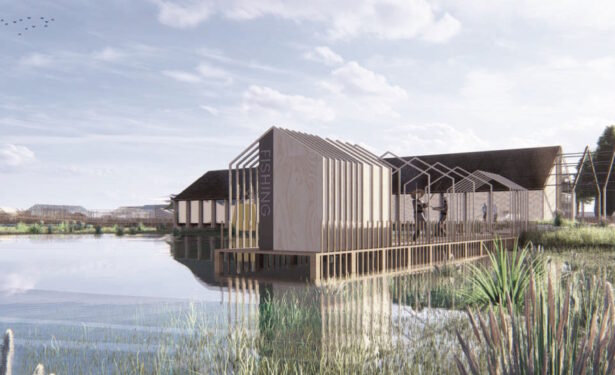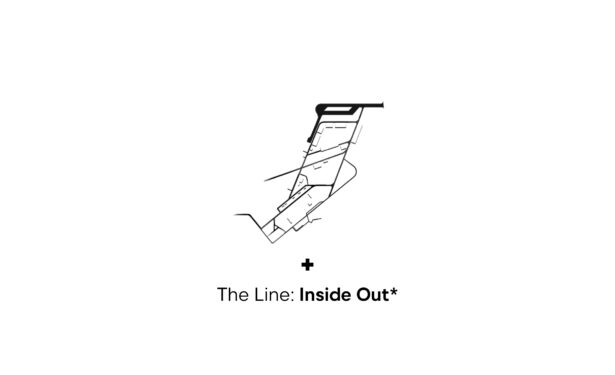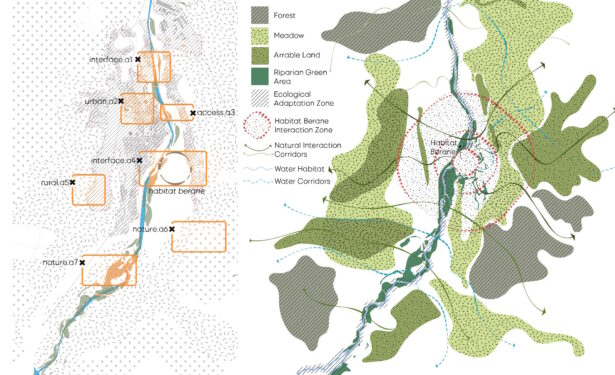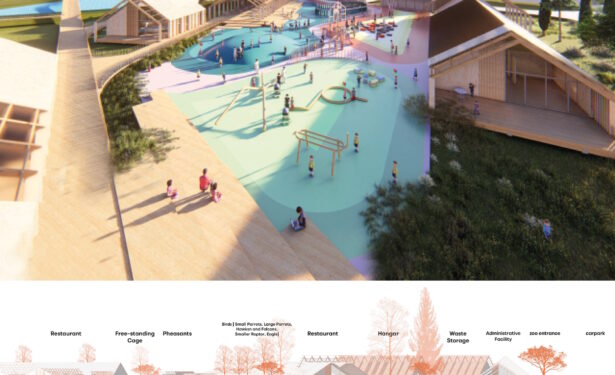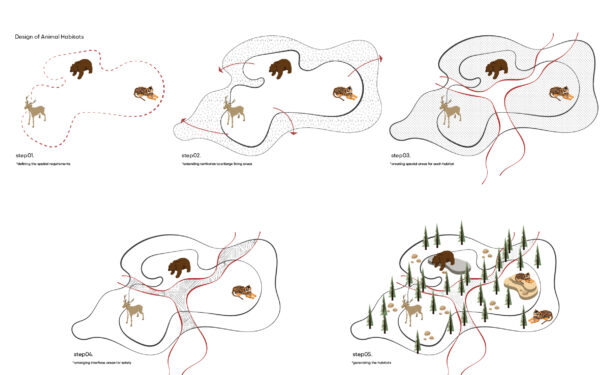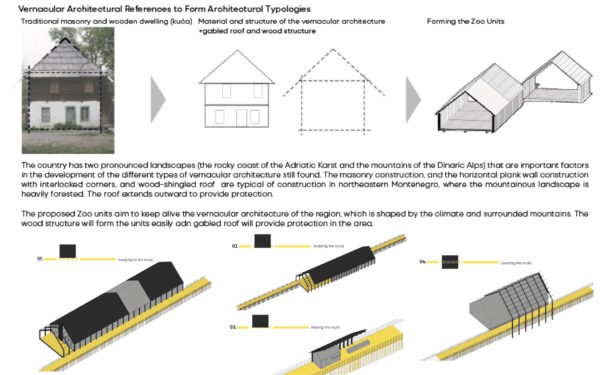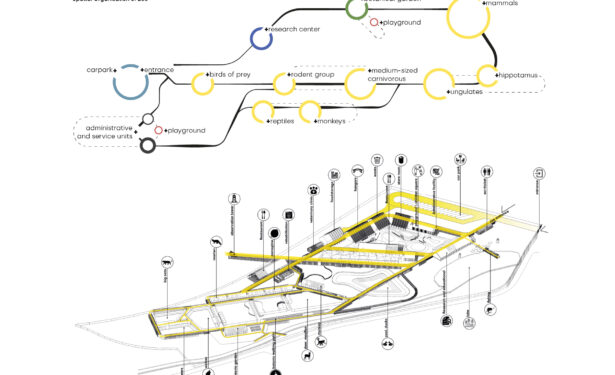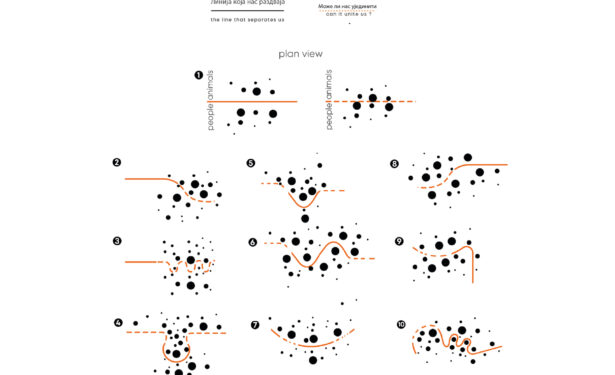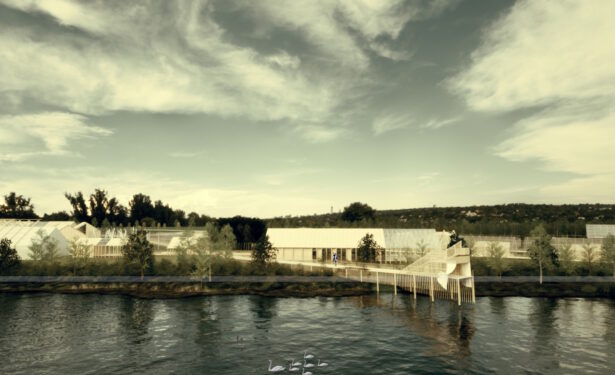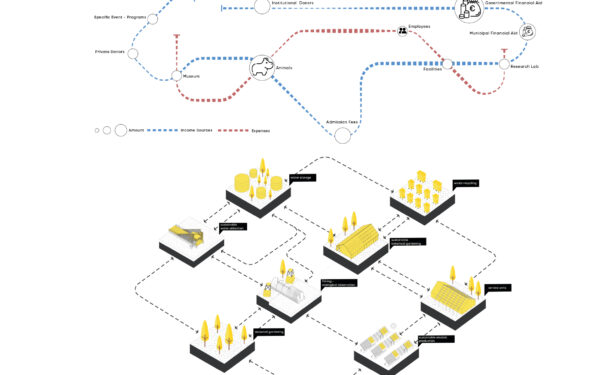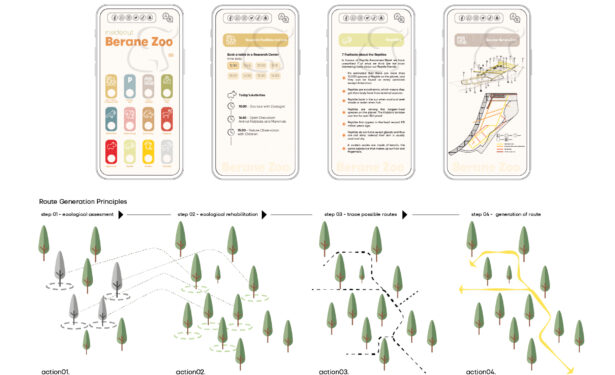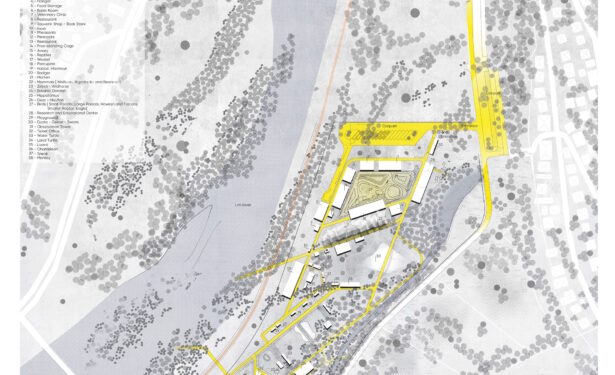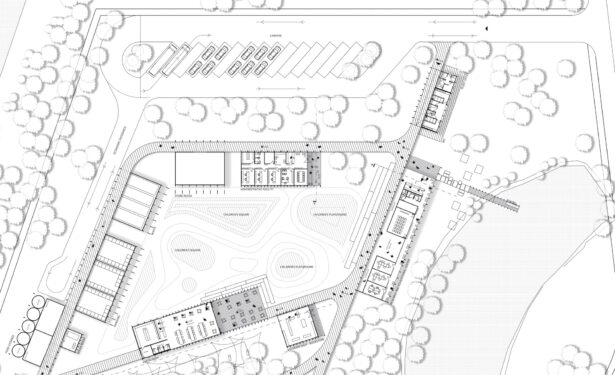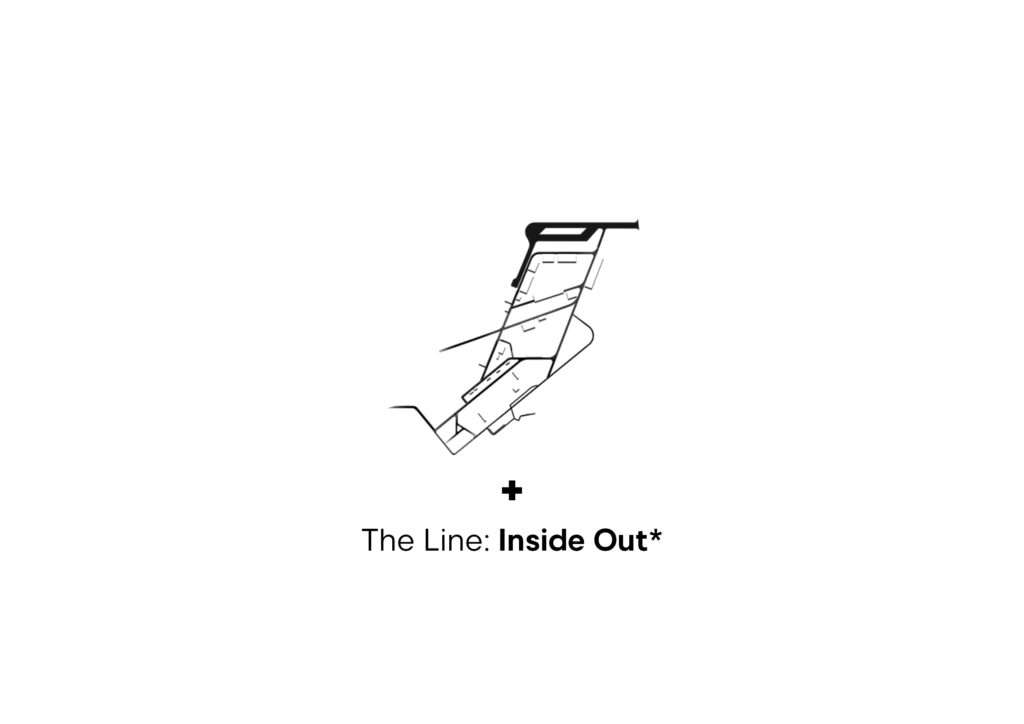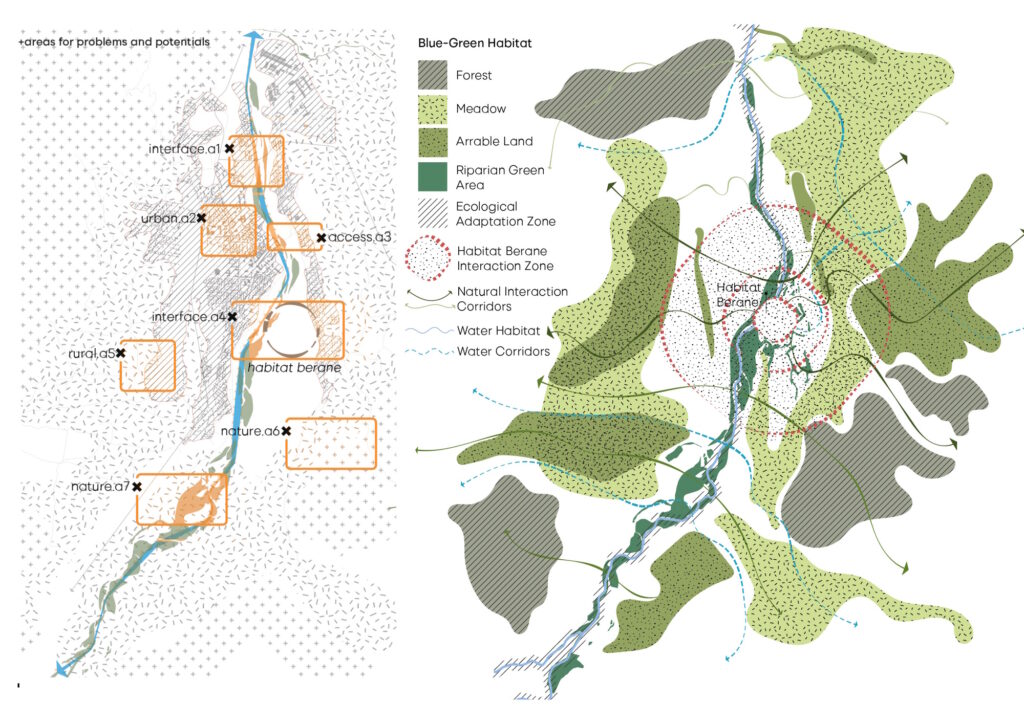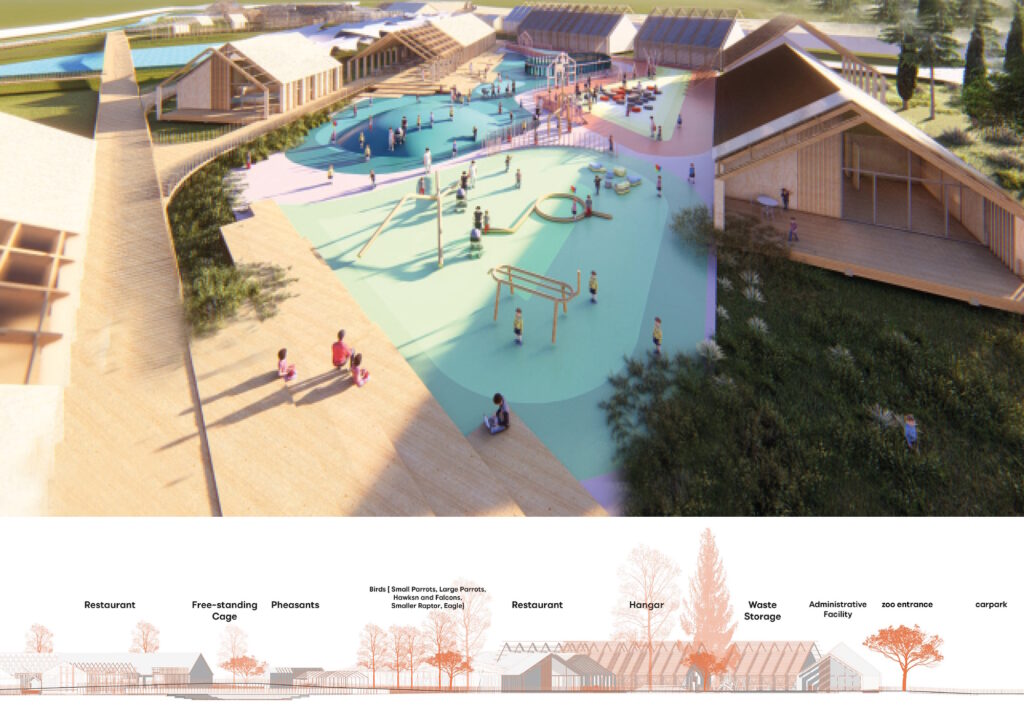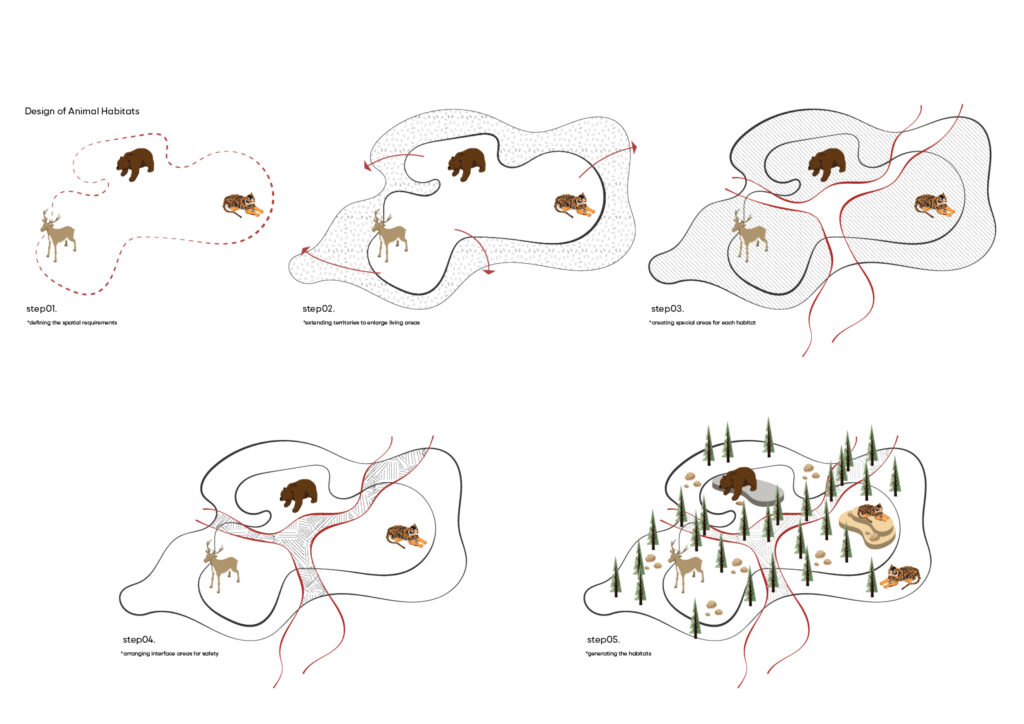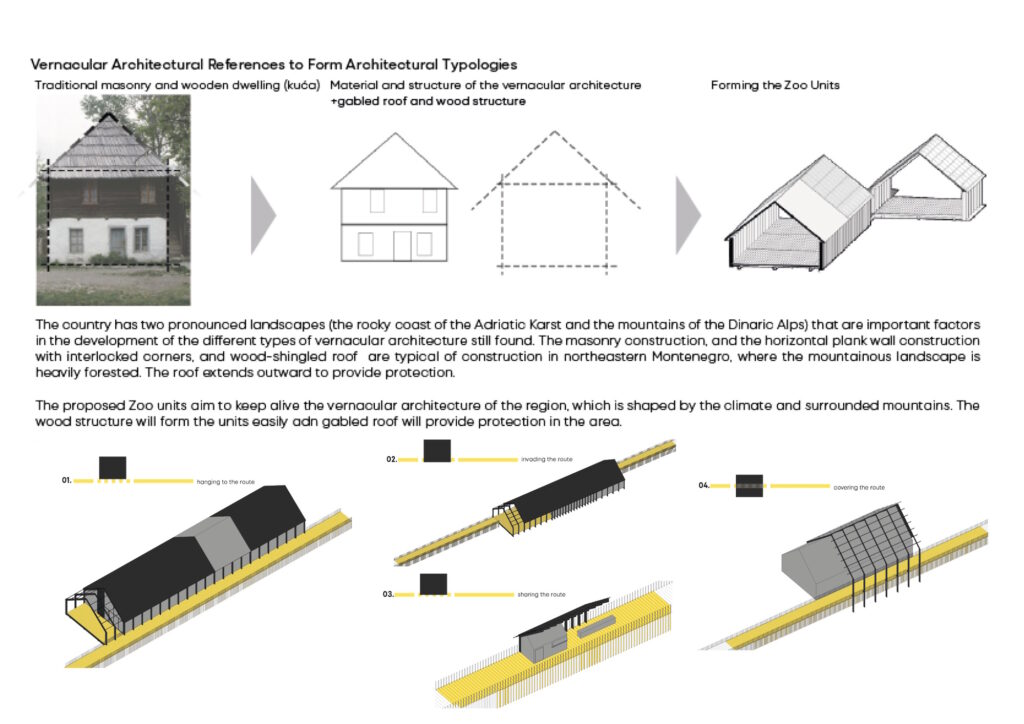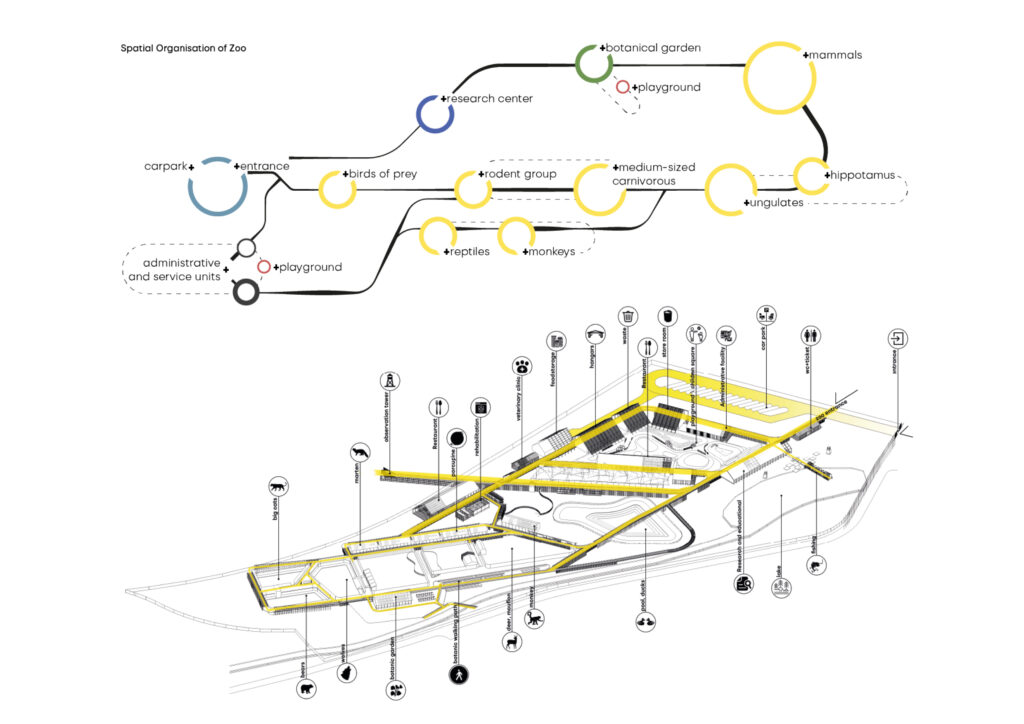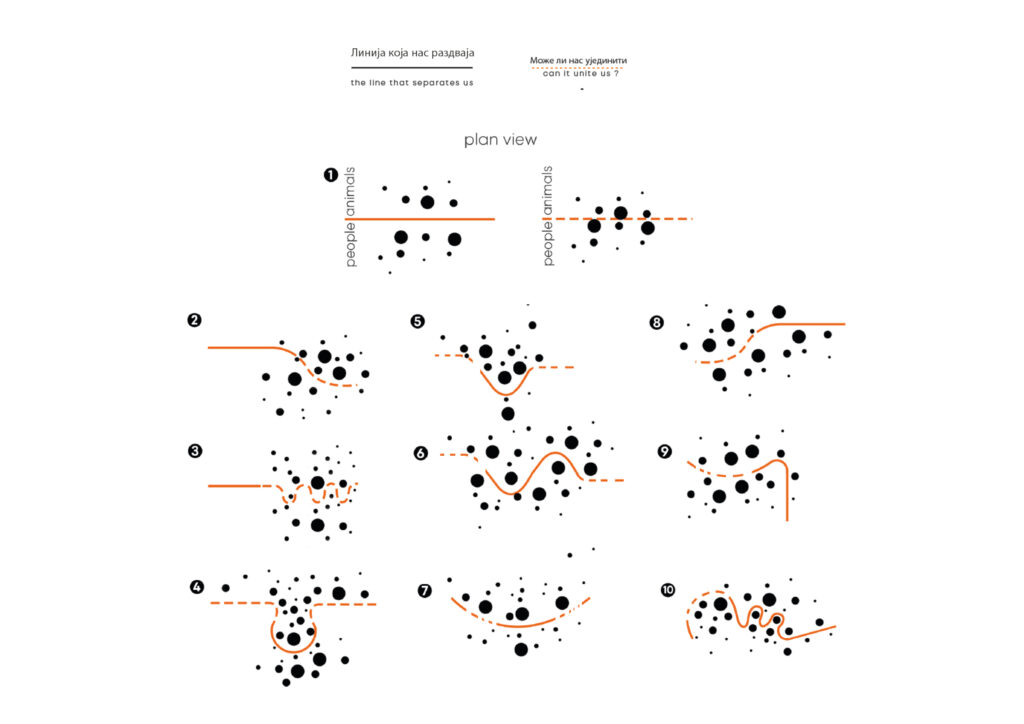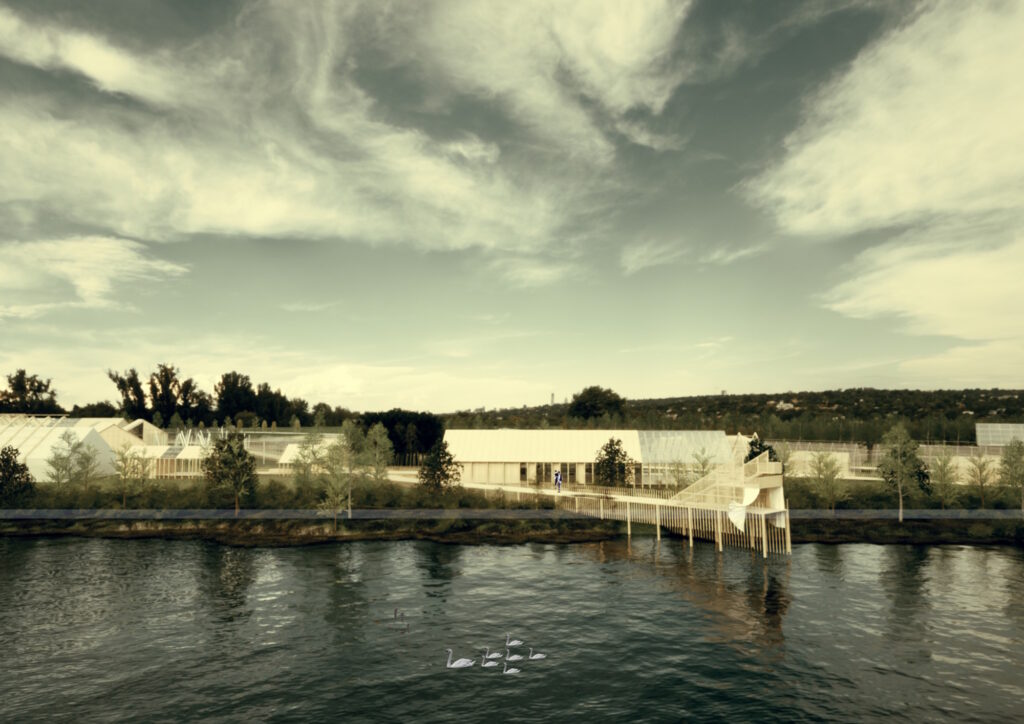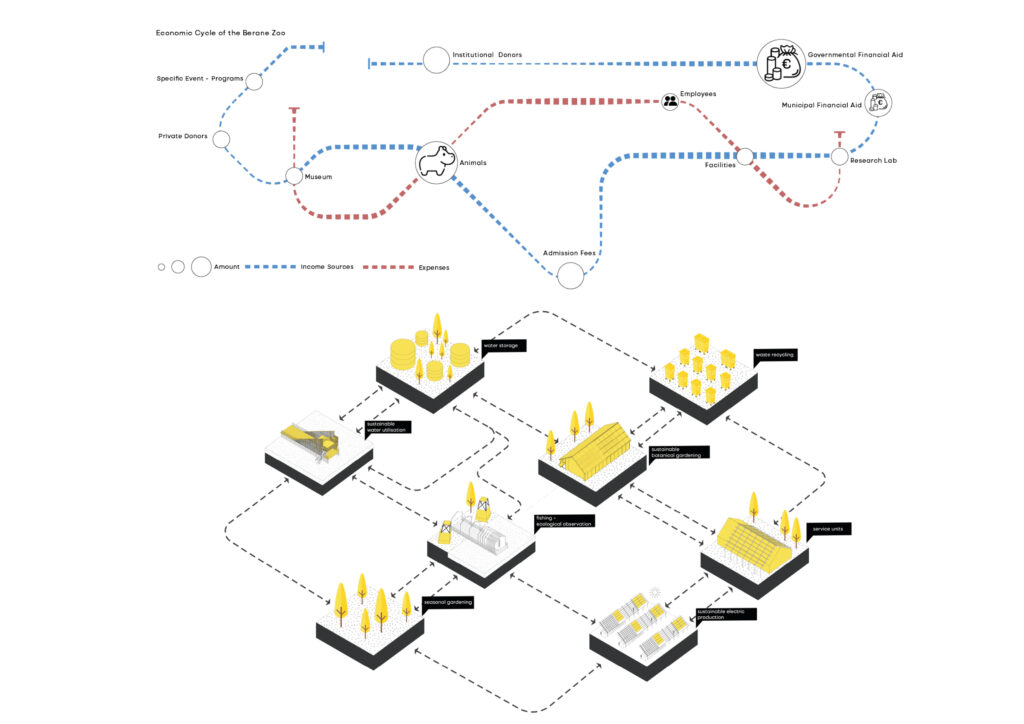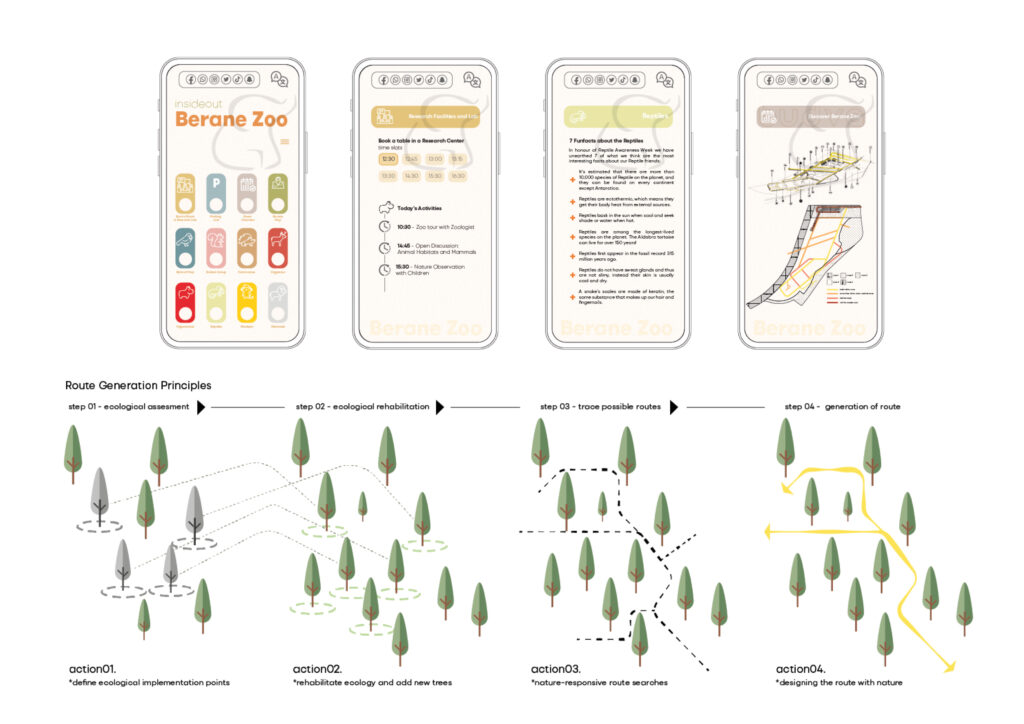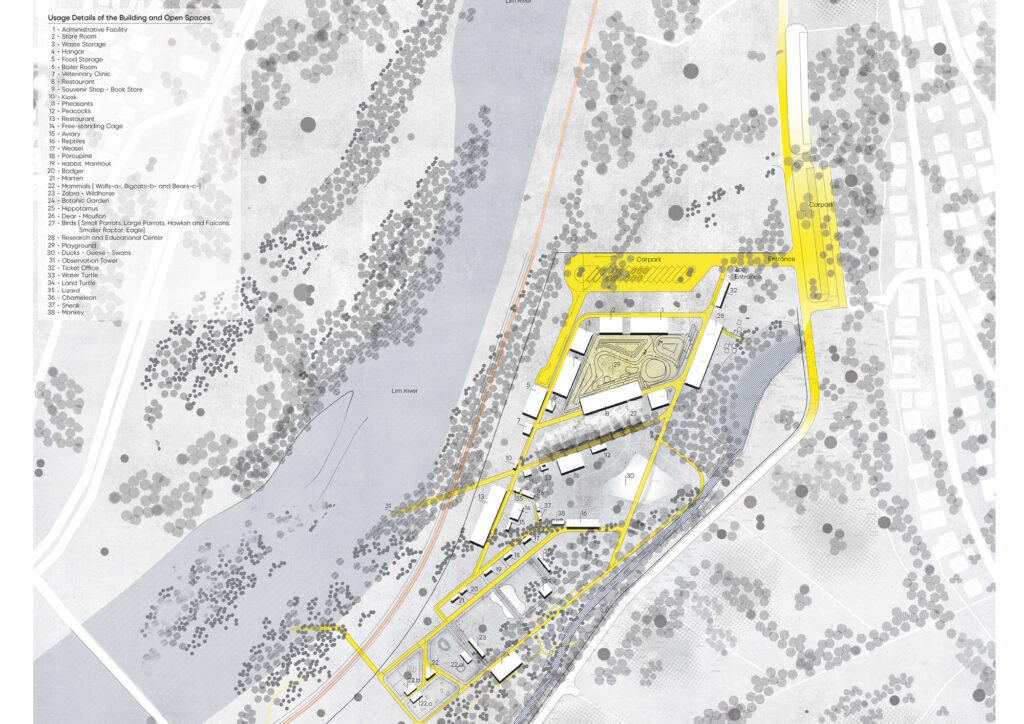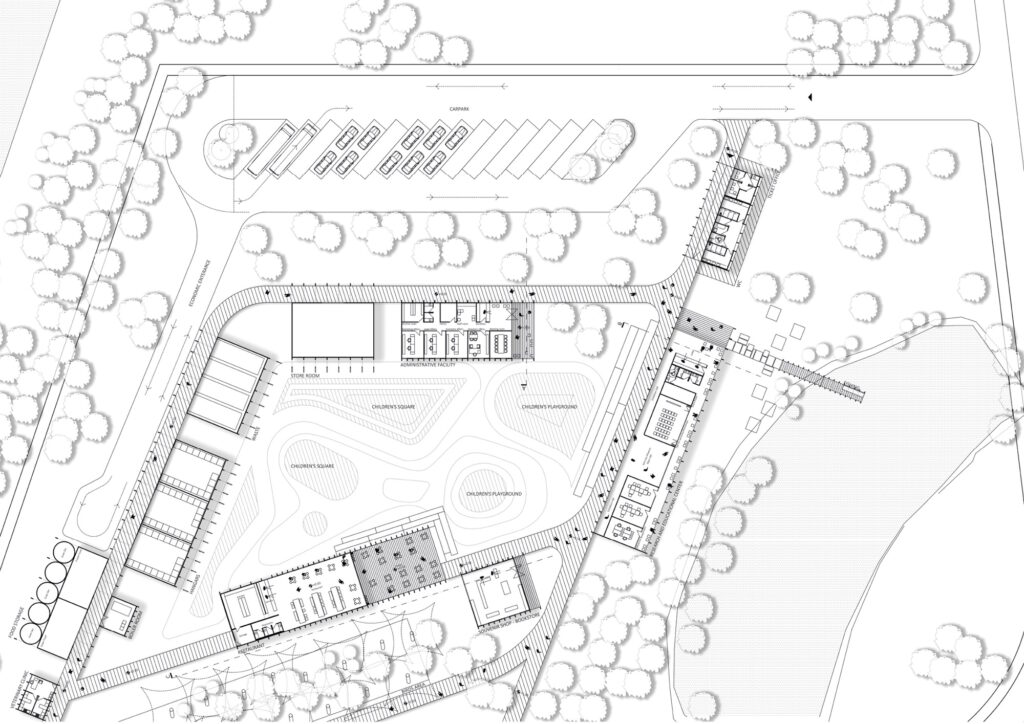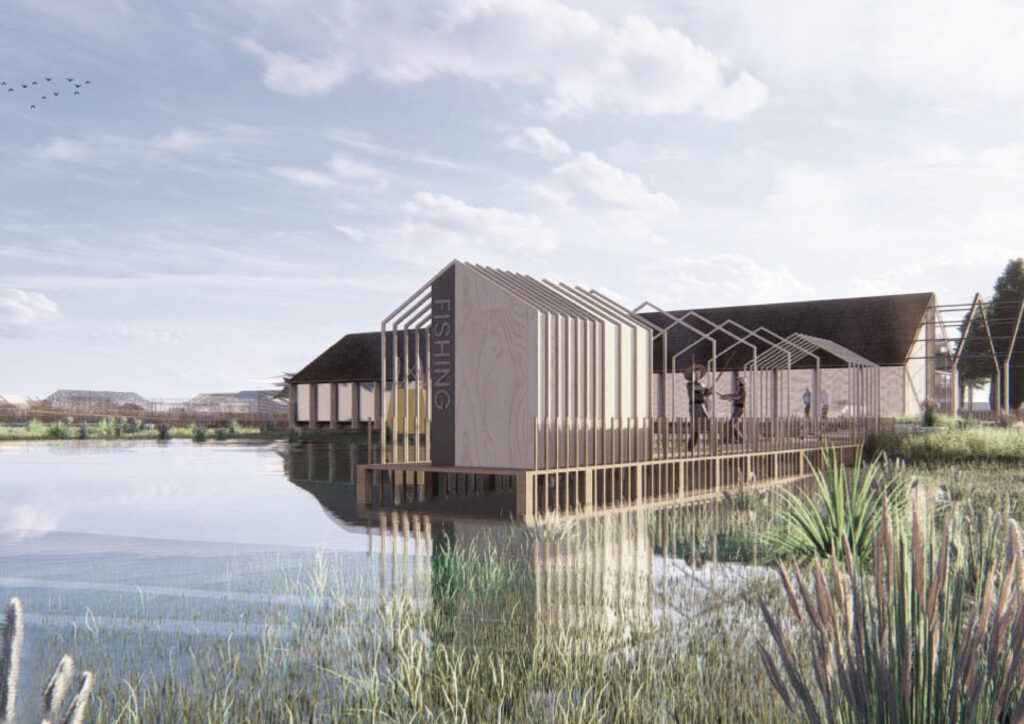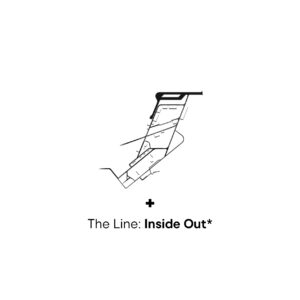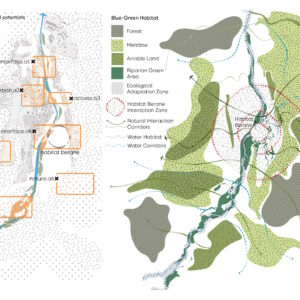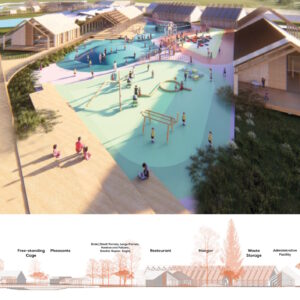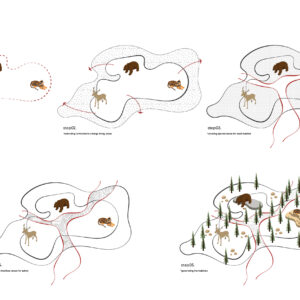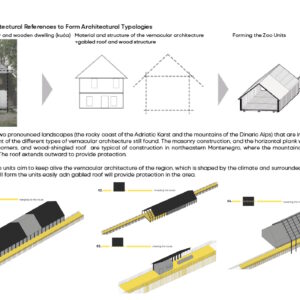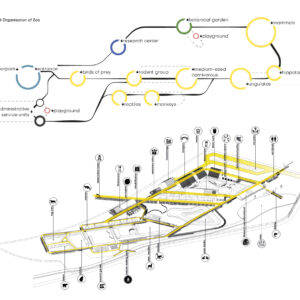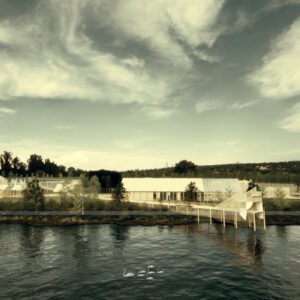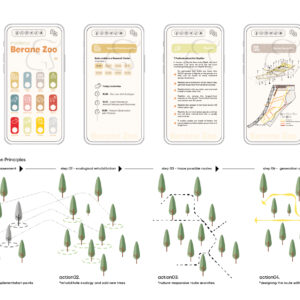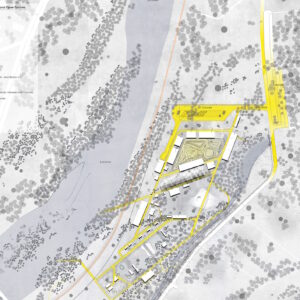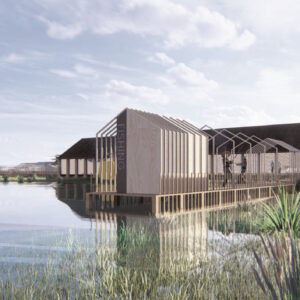- 17 Mayıs 2023
- 6531 defa okundu.
Mansiyon, The Conceptual Urban-Architectural Solution of the Center for the Acceptance of CITES-Listed Animals and the Zoo with the Associated Contact Zone in Montenegro Berane
Mert Akay (Şehir Plancısı), Nur Dilan Özdemir (Mimar), Gülüzar Gözay (Mimar), Damla İçyer (Mimar), İbrahim Özvarış (Mimar & Şehir Plancısı), Seçkin Çiriş (Şehir Plancısı), Zerin Demir (Mimar) Montenegro Berane'de açılan "The Conceptual Urban-Architectural Solution of the Center for the Acceptance of CITES-Listed Animals and the Zoo with the Associated Contact Zone in Montenegro Berane" isimli yarışmada mansiyon ödülü kazandı.
The Line: lnside Out
The creation of a new zoo in Berane as part of a broader habitat has the potential to play a significant role in the conservation and protection of animal species, as well as contribute to the restoration of blue-green ecosystems in the region.
The zoo will be designed to promote animal welfare and conservation through the creation of spacious and naturalistic enclosures that mimic the animals’ natural habitats. This will provide visitors with an immersive and educational experience, while also promoting the conservation of endangered species and biodiversity.
In addition, the zoo will serve as a hub for research and education, promoting scientific research and environmental education. This will foster a greater understanding of the region’s natural ecosystems, and provide valuable insights into the biology and behavior of the animals residing in the zoo.
Furthermore, the zoo will also have a positive impact on the local environment. The creation of the zoo will involve extensive planning and management to ensure the preservation of natural habitats and the sustainable use of resources. This will promote the restoration of natural ecosystems, and contribute to the overall protection of the region’s biodiversity.
The new zoo in Berane as part of a broader habitat represents an important ecological investment for the region. It has the potential to promote animal welfare and conservation, foster environmental education and research, and contribute to the restoration of natural ecosystems. The success of this project will depend on careful planning and management, and a commitment to sustainable development and conservation practices.
The river “Lim” divides Berane into two zones east & west. Considering functional focal points western part of the river is rather rich, so the major part of the population locates there. There are three different categorical and unique focal points such as related to transportation, culture and core.
Coach station and airport can be regarded as transport focal points that ensure inter-city relationships of Berane with other cities as well as inner-city relationships. Cultural centres, museums and exhibition centres are regarded as cultural focal points. These usages provide services to the entire city and its residents. Moreover, cultural focal points work in nested ways with both core and transport focal usages. Core focal points mean fundamental usages that city residents can properly utilize for daily life. Municipality buildings and commercial zones are regarded as core focal points. All three focal usages create a multi-functional focal zone in the western part of Lim.
Unlike the western part of Lim, another side of the river is rather scarce in terms of focal usage. The spatial characteristic of this site can be evaluated as “rural” compare to the west side which is “urban”. Moreover, rich vegetation elements make this zone as recreational focal. A similar use with the zoo will be integrated into this area. In this way, the east bank of the river is planned to be enriched to some extent as focal uses.
The fundamental spatial dynamics of Berane can be evaluated in 2 different zones. The river “Lim” is a basic determinant because it divides the city into two characteristic sides/parts. The western part of the river is named an inhabited zone and urban land because most of the population lives there. The eastern part of the river has less urban land dynamics and it has forestland so, there is a natural and ecological threshold.
Examining the competition area is enclosed by a different zone that has unique characteristics and dynamics. Although the near circle of the competition area is vacant, it locates in an interface zone and this situation has pros and results. Zoo and its vegetation will contribute ecological characteristics of the entire Berane. The competition area will form a whole with the surrounding natural & ecological areas. It is also planned to establish integrated relations with the city centre. Considering its proximity to the river, it will have an integrated habitat feature with natural water elements.
From another point of view, the fact that the competition area is at the interface of urban and rural areas is also important in terms of ensuring the permeability of different areas which have unique characteristics.
Examining the fundamental characteristic of Berane transportation, there 2 main parallel and vertical axis that provides north-south access as well as 1 lateral axis that connects east to west. Considering transport facilities, the coach station and airport can be regarded as transport focal points that ensure inter-city relationships of Berane with other cities as well as inner-city relations.
One of the major problems is the lack of accessibility to the city centre both for public and private transportation. There is only one connection that passes through the northern part of the competition area that links there with the city centre. Moreover, any public transport options have not been observed. The planned vehicle route is aimed to strengthen the transportation connection between the zoo and the eastern part of the river and the city centre.
Considering car parking, it is planned to construct a hub-parking space for the visitors on the north-eastern side of the competition border.
The new zoo in Berane as part of a broader habitat represents an important ecological investment for the region. It has the potential to promote animal welfare and conservation, foster environmental education and research, and contribute to the restoration of natural ecosystems.
Four different interaction zones are identified that formulate the spatial and environmental relations of the zoo with surrounding area. Several planning and design interventions are determined for each zone.
Zone 1 covers the Zoo itself and immediate environment. Design decisions for this zone are primarily formulated to ensure close connection of the zoo with close ecological environment.
Zone 2 covers the zoo and surronding natural environment. For this area, we proposed new installations, wayfinding elements and info kiosk within the natural environment to increase the habitat awareness.
Zone 3 comprised city centers, natural environment and built fabric. To increase interaction between citizens and zoo, we came up with habitat info center and info spots within the urban fabric.
Zone 4 composed of mostly natural environment and built fabric. For those areas, we proposed new installations, wayfinding elements and info kiosk within the natural environment to increase the habitat awareness.
The Berane Zoo app is designed to enhance the visitor experience by providing a digital guide to the zoo. The app willfeature a map of the zoo with all the different animal exhibits marked, as well as information about each animal and its habitat.
Visitors will use the app to learn more about the animals they’re seeing and get a better understanding of their behavior and natural environment. In addition, the app will offer interactive features such as quizzes and challenges that encourage visitors to explore the zoo and engage with the animals.
With the Berane Zoo app, visitors can:
+ Explore the Berane Zoo with interactive maps that highlight the animals, botanic park and activity areas
+ Plan their itinerary with personalized recommendations based on interests and preferences
+ Discover hidden gems and off-the-beaten-path experiences
+ Stay up-to-date on events and activities happening in Berane Zoo throughout the year
+ Book tours, activities, and transportation with just a few taps
A new design understanding for the Berane Zoo prioritises the well-being of animals and avoids harming them. Here are some key considerations:
1.Focus on animal welfare: The primary goal of Berane Zoo will provide a safe, healthy, and stimulating environment for the animals in its care. This means designing enclosures that mimic the animals’ natural habitats as closely as possible and providing opportunities for them to engage in natural behaviours like foraging, playing, and socialising.
2.Education and conservation: Berane Zoo will also serve as a vital educational and conservation institution. By showcasing a diverse range of animal species and teaching visitors about their natural histories, Berane Zoo can help raise awareness about the importance of biodiversity and the need for conservation efforts.
3.Ethical sourcing: When acquiring animals for the Berane Zoo, it’s important to use ethical sourcing practices that prioritise the animals’ well-being. This might include rescuing animals from situations where they are being mistreated or working with reputable breeders who prioritise animal welfare over profit.
4.Collaboration with experts: Berane Zoo will work closely with animal welfare experts, veterinarians, and conservation biologists to ensure that they are providing the best possible care for their animals. This might include regular health checkups, environmental enrichment programs, and careful monitoring of the animals’ behaviour and well-being.
5.Reduced human impact: Finally, Berane Zoo will minimise its impact on animals by reducing the number of visitors, avoiding loud noises and other disturbances, and limiting interactions between animals and humans to the extent possible.
By prioritizing animal welfare, education, and conservation and working closely with experts to provide the best possible care for their animals, Berane Zoo will become a more ethical and sustainable institutions that contribute to the well-being of both animals and humans.
